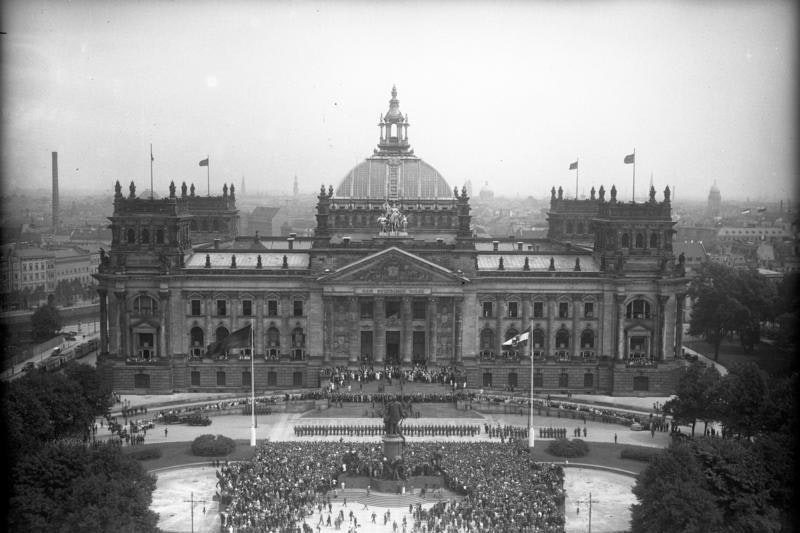Study Notes
Reichstag
- Level:
- AS, A-Level
- Board:
- AQA, Edexcel, OCR
Last updated 22 Mar 2021
The Reichstag is a term that can explain three things. Firstly, it is synonymous with the German Parliament including the Reichsrat as the Upper Chamber. Secondly it is the building which houses the German Parliament, and finally, it is the lower chamber of the legislature.

As a building:
The Reichstag building housed the Imperial Diet under the German Empire during the Kaiserreich and then the German Parliament during the Weimar Republic. The building was in continual use from its opening in 1894 to 1933 when the building was damaged in a fire. The building remained empty after the 1933 fire with the Nazi Reichstag moving out and not returning. The Reichstag was not used as parliament building until after the reunification of Germany when it reopened to house the Bundestag in 1999.
As a legislative chamber:
The Reichstag acted as the lower house in the German legislature. A Reichstag was in operation throughout the Weimar Republic and then into the Nazi period. During the Weimar Republic, the Reichstag took over the legislative responsibility from the Weimar National Assembly before being replaced in 1933 after the Nazi takeover.
The Reichstag of the Weimar Republic was established in 1919 and was elected through universal suffrage, via a method of proportional representation. Political parties could put candidates up to be elected from across the nation. Constitutionally, elections were supposed to be held at the end of the four year parliamentary term but in practice, the unstable nature of governments resulted in early elections and continual changes of government.
They key powers of the Reichstag were to pass laws for the Weimar Republic, make declarations of war and approve treaties with other nations. The Reichstag could force no confidence motions in government ministers and even the chancellor. Typically, if a chancellor lost a confidence motion then fresh elections would be chosen.
Due to the fractious nature of the Government of the Weimar Republic, many chancellors had to rely on Article 48 or Emergency Powers to get government business passed. This circumvention of the Reichstag was one of two methods to get legislation passed the other being the use of enabling acts from 1919-1923 and then again in 1933.
Whilst the Reichstag had multiple parties making up the chamber under the Weimar Republic, under the Nazi dictatorship the Reichstag was a one-party chamber which merely rubber stamped the actions of Hitler and the Nazi dictatorship.
The Problems of Proportional Representation
Whilst the system that had been put in place was meant to be the most democratic system it had a flaw. Parties who gained votes were entitled to seats in the chamber, as there was no minimum threshold to qualify. This resulted in many parties being represented each with differing ideas about how Germany should be governed, and as a result, could not agree, therefore it was difficult to pass legislation. The electoral system also meant that it was difficult for parties to win a majority so had to agree to coalition compromises.
You might also like
Reich President
Study Notes
GCSE: Germany (1918-39) - Opposition, Conformity and Resistance (Revision Quiz)
Quizzes & Activities
GCSE: Germany (1918-39) - Controlling and Influencing Attitudes (Revision Quiz)
Quizzes & Activities
GCSE: Germany (1918-39) - The Police State (Revision Quiz)
Quizzes & Activities
GCSE: Germany (1918-39) - Creation of a Dictator 1933-34 (Revision Quiz)
Quizzes & Activities
The Weimar Constitution
Study Notes
Coalition Government
Study Notes